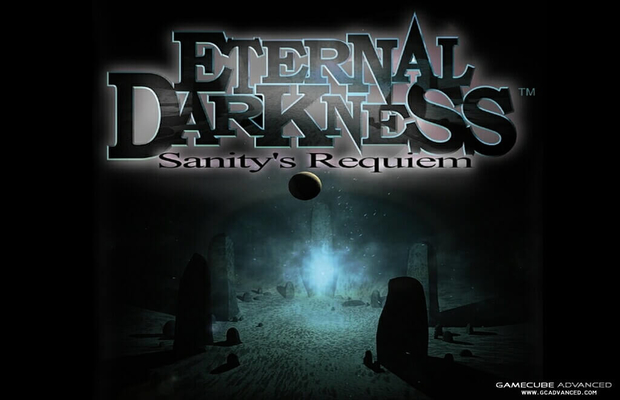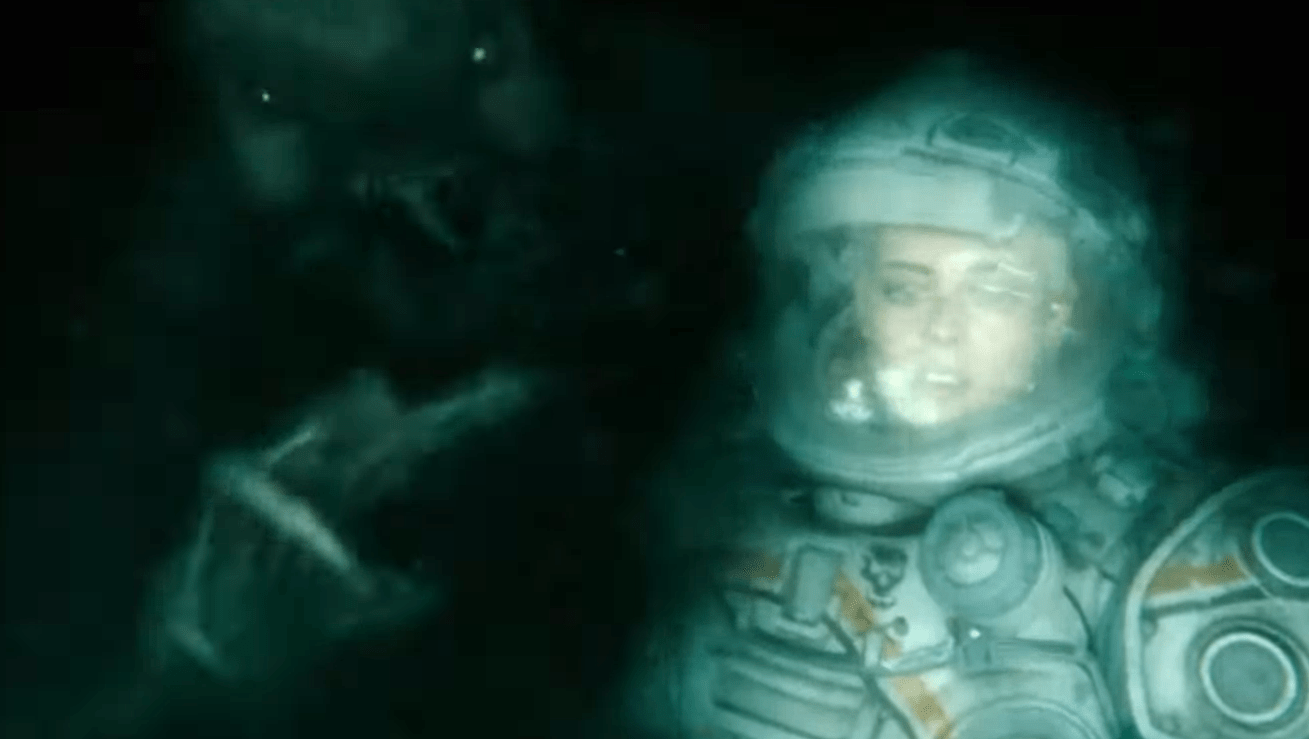Editorials
Why ‘Eternal Darkness’ Was the Last Great Exclusive Nintendo Horror Title

Nintendo hasn’t been a huge advocate of the horror video game genre in recent times. The company’s family-friendly aesthetic, coupled with a lack of well-received horror titles on their consoles, has ensured that other platforms have become the go-to for scary franchises.
This wasn’t always the case. Nintendo was as likely to greenlight a survival-horror, psychological thriller, or other spooky game as much as anyone else back in the 1990s and early 2000s. One such title – Eternal Darkness: Sanity’s Requiem – even holds the distinction of being one of the most critically-acclaimed games on the Nintendo GameCube. Few have been able to force themselves into this elite class of game since, particularly in the horror genre. Can it be argued, then, that Eternal Darkness was the last great first-party Nintendo horror game?
Upon its initial release in the US in June 2002, Eternal Darkness drew widespread praise from critics for its unique gameplay mechanics, spooky allure, and intriguing plot. Boasting a 92 out of 100 aggregate score on Metacritic, it stands out as the only horror title to deserve such a rating. Players take on the role of Alexandra Roivas, a university student who returns to her childhood home after her last living relative is found brutally murdered. After she uncovers the Tome of Eternal Darkness, the narrative jumps between present day – where Alexandra is controlled – and multiple playable characters within “chapters” of the book. Taking place across four different locations, players must use these characters to prevent a powerful enemy from enslaving humanity forever.

Eternal Darkness took plenty of its inspiration from the Resident Evil series, but the implementation of a ‘sanity meter’ mechanic added a bold layer that often confused and scared gamers in equal measure. Its timeline jumping mechanic and multiple story path endings won it acclaim as well. No other horror title has come close to matching Eternal Darkness’ score since, albeit with little in the way of true competition. Only 10 exclusive Nintendo horror games have been released since Eternal Darkness 16 years ago. Of that number, just three have broken the 70 out of 100 barrier on Metacritic – Dementium: The Ward, Project Zero 2: Wii Edition, and ZombiU – but all failed to overthrow Eternal Darkness at the top.
Score aggregation websites aren’t the solitary marker by which video games are judged, however. Titles can still sell well in spite of what the media thinks. ZombiU, a 2012 launch title on the Wii U, is proof of this. Its score pales in comparison to Eternal Darkness’ – 71 to 92 – but it shipped almost twice as many copies as the Silicon Knights developed game. Some would argue that this barometer is a truer reflection of what should be considered a classic, and yet ZombiU isn’t viewed this way. Thanks to the short shelf life of the Wii U, and a lack of spectacular launch titles upon the console’s release, ZombiU was the pick of the bunch in November 2012. This, if anything, was a perfect summation of the Wii U in general, and gamers quickly moved on from ZombiU and the console entirely.
In something of a U-turn, Nintendo has begun to soften its stance on horror games in the past 12 months. Titles such as Outlast, Doom, Resident Evil Revelations, and more have been ported to the company’s Switch console since its launch in March 2017. The reception to these excellent games would be good enough to potentially rival Eternal Darkness but for one obvious problem – Nintendo’s lack of involvement in their development or publication. Eternal Darkness was published by Nintendo, which protects its rightful claim to the exclusive crown.

Eternal Darkness didn’t get everything right to be considered a truly iconic Nintendo franchise. Despite being lauded by critics, its failure to ship more than 500,000 copies worldwide ended any chance of a potential sequel being developed. Silicon Knights’ financial problems, too, resulted in the developer being closed down in May 2013.
Nintendo still holds the game’s trademark, should they wish to revive it down the line. The company’s lack of in-house published horror games, alongside its desire to refresh and develop its core franchises such as Metroid, Pokemon, and more, means that won’t be happening any time soon though.
Eternal Darkness may not have been well-received by the public, but its uniqueness in certain gameplay aspects and interesting, scary plot allowed Silicon Knights to deliver on its promises. It isn’t iconic in the way that Mario, Zelda, or another Nintendo property is. However, its consistently high review ratings mean that it has gone toe-to-toe with established franchises in the upper echelons of review scores. Eternal Darkness’ rarity as a Nintendo published horror game sets it apart from others on the company’s long list of platforms too, and cements its place in an often overlooked genre for the Japanese gaming giant.
It might not be the unmitigated success that had been hoped, but Eternal Darkness can hold its head high as the last truly great first-party Nintendo horror game.

Editorials
The Lovecraftian Behemoth in ‘Underwater’ Remains One of the Coolest Modern Monster Reveals

One of the most important elements of delivering a memorable movie monster is the reveal. It’s a pivotal moment that finally sees the threat reveal itself in full to its prey, often heralding the final climactic confrontation, which can make or break a movie monster. It’s not just the creature effects and craftmanship laid bare; a monster’s reveal means the horror is no longer up to the viewer’s imagination.
When to reveal the monstrous threat is just as important as HOW, and few contemporary creature features have delivered a monster reveal as surprising or as cool as 2020’s Underwater.
The Setup
Director William Eubank’s aquatic creature feature, written by Brian Duffield (No One Will Save You) and Adam Cozad (The Legend of Tarzan), is set around a deep water research and drilling facility, Kepler 822, at the bottom of the Mariana Trench, sometime in the future. Almost straight away, a seemingly strong earthquake devastates the facility, creating lethal destruction and catastrophic system failures that force a handful of survivors to trek across the sea floor to reach safety. But their harrowing survival odds get compounded when the group realizes they’re under siege by a mysterious aquatic threat.
The group is comprised of mechanical engineer Norah Price (Kristen Stewart), Captain Lucien (Vincent Cassel), biologist Emily (Jessica Henwick), Emily’s engineer boyfriend Liam (John Gallagher Jr.), and crewmates Paul (T.J. Miller) and Rodrigo (Mamadou Athie).

Eubank toggles between survival horror and creature feature, with the survivors constantly facing new harrowing obstacles in their urgent bid to find an escape pod to the surface. The slow, arduous one-mile trek between Kepler 822 and Roebuck 641 comes with oxygen worries, extreme water pressure that crushes in an instant, and the startling discovery of a new aquatic humanoid species- one that happens to like feasting on human corpses. Considering the imploding research station, the Mariana Trench just opened a human buffet.
The Monster Reveal
For two-thirds of Underwater’s runtime, Eubank delivers a nonstop ticking time bomb of extreme survival horror as everything attempts to prevent the survivors from reaching their destination. That includes the increasingly pesky monster problem. Eubank shows these creatures piecemeal, borrowing a page from Alien by giving glimpses of its smaller form first, then quick flashes of its mature state in the pitch-black darkness of the deep ocean.
The third act arrives just as Norah reaches the Roebuck, but not before she must trudge through a dense tunnel of sleeping humanoids. Eubank treats this like a full monster reveal, with Stewart’s Norah facing an intense gauntlet of hungry creatures. She’s even partially swallowed and forced to channel her inner Ellen Ripley to make it through and inside to safety.
Yet, it’s not the true monster reveal here. It’s only once the potential for safety is finally in sight that Eubank pulls the curtain back to reveal the cause behind the entire nightmare: the winged Behemoth, Cthulhu. Suddenly, the tunnel of humanoid creatures moves away, revealing itself to be an appendage for a gargantuan creature. Norah sends a flare into the distance, briefly lighting the tentacled face of an ancient entity.

It’s not just the overwhelming vision of this massive, Lovecraftian entity that makes its reveal so memorable, but the retroactive story implications it creates. Cthulhu’s emerging presence, awakened by the relentless drilling at the deepest depths of the ocean, was behind the initial destruction that destroyed Kepler 822. More importantly, Eubank confirmed that the Behemoth is indeed Cthulhu, which means that the humanoid creatures stalking the survivors are Deep Ones. What makes this even more fascinating is that the choice to give the Big Bad Behemoth a Lovecraftian identity wasn’t part of the script. Eubank revealed in an older interview with Bloody Disgusting how the creature quietly evolved into Cthulhu.
The Death Toll
Just how deadly is Cthulhu? Well, that depends. Most of the on-screen deaths in Underwater are environmental, with implosions and water pressure taking out most of the characters we meet. The Deep Ones are first discovered munching on the corpse of an unidentified crew member, and soon after, kill and eat Paul in a gruesome fashion. Lucien gets dragged out into the open depths by a Deep One in a group attack but sacrifices himself via his pressurized suit to save his team from getting devoured.
The on-screen kill count at the hands of this movie monster and its minions is pretty minimal, but the news article clippings shown over the end credits do hint toward the larger impact. Two large deepsea stations were eviscerated by the emergence of Cthulhu, causing an undisclosed countless number of deaths right at the start of the film.

Norah gives her life to stop Cthulhu and save her remaining crewmates, but the Great Old One isn’t so easily vanquished. While the Behemoth may not have slaughtered many on screen here, his off-screen kill count through sheer destruction is likely impressive.
But the takeaway here is that Underwater ends in such a way that the Lovecraftian deity may only be at the start of a new reign of terror now that he’s awake.
The Impact
Neither Underwater or Cthulhu overstay their welcome here. Eubank shows just enough of his Behemoth to leave a lasting impression, without showing too much to ruin the mystery. The nonstop sense of urgency and survival complications only further the fast-paced thrills.
The result is a movie monster we’d love to see more from, and for horror fans, there’s no greater compliment than that.
Where to Watch
Underwater is currently available to stream on Tubi and FX Now.
It’s also available on Blu-ray, DVD, and Digital.
In television, “Monster of the Week” refers to the one-off monster antagonists featured in a single episode of a genre series. The popular trope was originally coined by the writers of 1963’s The Outer Limits and is commonly employed in The X-Files, Buffy the Vampire Slayer, and so much more. Pitting a series’ protagonists against featured creatures offered endless creative potential, even if it didn’t move the serialized storytelling forward in huge ways. Considering the vast sea of inventive monsters, ghouls, and creatures in horror film and TV, we’re borrowing the term to spotlight horror’s best on a weekly basis.














You must be logged in to post a comment.